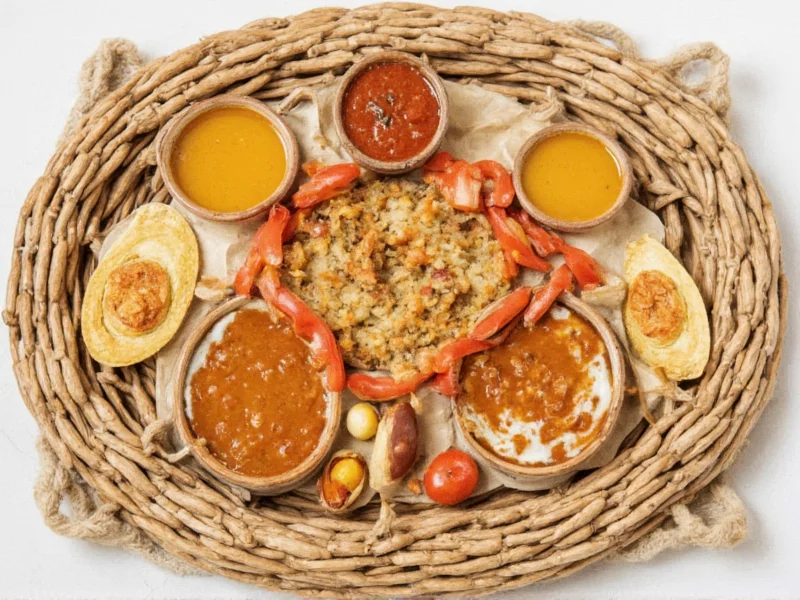Understanding soup classifications enhances both cooking skills and cultural appreciation of this universal food. Whether you're a home cook exploring new recipes or a culinary student building foundational knowledge, recognizing these categories helps identify preparation techniques, expected textures, and traditional serving methods. Soup varieties span every continent, reflecting local ingredients and historical influences while maintaining the comforting essence that makes soup a global staple.
Understanding Soup Classification Systems
Chefs and food historians categorize soups based on multiple factors including texture, preparation method, primary ingredients, and cultural origin. The French culinary tradition established the most widely adopted classification system, though regional variations exist. Modern interpretations expand this framework to accommodate dietary preferences and contemporary cooking techniques while respecting traditional methods.
| Soup Category | Key Characteristics | Preparation Method | Common Examples |
|---|---|---|---|
| Clear Soups | Transparent broth, no thickening agents | Simmering bones/meat with aromatics | Chicken broth, beef consommé, miso soup |
| Thick Soups | Opaque texture, various thickening methods | Roux, pureeing, cream addition | Vichyssoise, tomato bisque, pumpkin soup |
| Specialty Soups | Distinct regional preparations | Combination techniques | Clam chowder, gazpacho, borscht |
| Cold Soups | Served chilled, often vegetable-based | Blending raw/cooked ingredients | Aioli, vichyssoise, shabu-shabu |
Clear Soups: The Foundation of Culinary Broths
Clear soups represent the purest expression of broth-based preparations. These soups undergo careful clarification to achieve transparency while concentrating flavors. Professional kitchens often spend hours perfecting consommés, using egg whites and ground meat to trap impurities through a process called rafting. Home cooks can create excellent clear soups through careful skimming and gentle simmering.
Different types of soup categories within this group include:
- Broths - Simpler preparations using meat and vegetables
- Consommés - Clarified broths requiring precise technique
- Bouillons - Quick-cooked broths often used as soup bases
- Stocks - Culinary foundations rather than finished soups
Traditional soup varieties worldwide demonstrate regional adaptations of clear soups. Japanese dashi uses kombu and bonito flakes, while Chinese double-boiled soups employ slow extraction methods. Understanding these variations helps cooks appreciate how different cultures approach the fundamental concept of broth.
Thick Soups: Texture and Technique
Thick soups achieve their characteristic consistency through various methods, each producing distinct textures and mouthfeels. The primary thickening techniques include roux-based preparations, pureeing, and cream enrichment. Culinary professionals select methods based on desired outcome, ingredient compatibility, and cultural authenticity.
How to classify soups properly within this category requires understanding these subtypes:
- Puree soups - Thickened by blending main ingredients (pea soup, lentil soup)
- Cream soups - Enhanced with dairy after pureeing (cream of mushroom)
- Bisques - Smooth, creamy preparations often from shellfish
- Veloutés - Stock-based soups thickened with roux
The difference between clear soups vs thick soups extends beyond texture to preparation philosophy. Thick soups often serve as complete meals, while clear soups typically function as starters or light fare. This distinction influences portion sizes, accompaniments, and serving temperatures across different culinary traditions.
Specialty and Regional Soup Traditions
Regional soup specialties showcase cultural identity through ingredients and techniques. These distinctive preparations often defy simple categorization, blending elements from multiple soup types while maintaining unique characteristics. Exploring these varieties reveals how local agriculture, climate, and historical influences shape culinary traditions.
Notable regional specialties include:
- Eastern European borscht - Beet-based soup with cultural variations across countries
- Mediterranean gazpacho - Chilled tomato soup with Andalusian origins
- French onion soup - Rich broth with caramelized onions and melted cheese
- Caribbean pepper pot - Meat-based stew with indigenous and colonial influences
Understanding traditional soup varieties worldwide requires recognizing how migration and trade routes spread culinary techniques. The tomato-based soups of Spain influenced Italian passata, while Portuguese explorers introduced chili peppers to Asian cuisines, transforming regional soup profiles. These historical connections create a rich tapestry of global soup traditions worth exploring.
Modern Soup Variations and Dietary Adaptations
Contemporary cooking has expanded soup classifications to accommodate diverse dietary needs without sacrificing flavor or texture. Chefs now create specialized versions that maintain authenticity while addressing specific nutritional requirements. These adaptations demonstrate soup's remarkable versatility across different eating lifestyles.
Vegetarian soup options have evolved beyond simple vegetable broths to include complex umami-rich preparations using mushrooms, seaweed, and fermented products. Vegan chefs employ cashew cream and coconut milk to replicate traditional cream soup textures, while gluten-free cooks use alternative thickeners like arrowroot and cornstarch.
Nutritional profiles of various soups can be optimized through ingredient selection. Bone broth enthusiasts extract maximum nutrients through extended simmering, while health-conscious cooks reduce sodium by using fresh herbs and citrus instead of salt. These modern approaches maintain soup's comforting essence while aligning with contemporary wellness priorities.
Practical Applications of Soup Knowledge
Understanding soup classifications enhances both cooking proficiency and menu planning. Home cooks can build versatile soup repertoires by mastering foundational techniques from each category. Professional chefs use this knowledge to create balanced menus that showcase seasonal ingredients through appropriate soup preparations.
When exploring different types of soup categories, consider these practical applications:
- Use clear soups as palate cleansers between courses
- Transform thick soups into sauces by adjusting consistency
- Adapt regional specialties using locally available ingredients
- Create seasonal menus featuring appropriate soup types
Mastering soup preparation requires understanding how ingredients interact during cooking. Starchy vegetables like potatoes naturally thicken soups, while acidic ingredients can prevent proper thickening. These technical considerations separate adequate soups from exceptional ones, making soup knowledge valuable for cooks at all levels.











 浙公网安备
33010002000092号
浙公网安备
33010002000092号 浙B2-20120091-4
浙B2-20120091-4